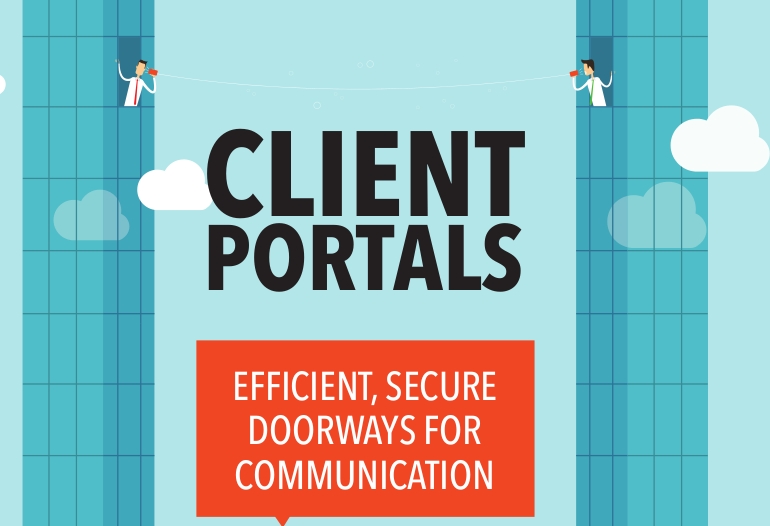Cloud Technology
Client Portals Increase Efficiency, Provide Greater Convenience
While portals have been around for a while, their features have evolved over time. No longer just a place to exchange documents, portals offers a variety of related tools including the ability to be notified when a client accesses a document in the portal
Nov. 12, 2015

If you’re one of the 42 percent of firms currently offering client portals, then you probably don’t need to read any further. But for the 58 percent of accounting firms that currently do not offer client portals, or perhaps need a little convincing, here are some things to think about:
- A portal can increase customer service efficiencies. Using a portal, firms can offer their clients with 24/7 access to tax returns and other sensitive documents. Accountants can upload completed tax returns and related data, with clients able to download the documents at their convenience. For firms using QuickBooks, some portals also offer access to QuickBooks files as well.
- Portals offer a secure way to exchange documents, eliminating the transfer of sensitive information via email. All data is securely encrypted, providing a level of security so that both accounting firms and their clients can be assured that sensitive and confidential information will remain secure.
- File size is no longer prohibitive if using a portal. If you’ve ever tried to email a large file, you’ll know that many private mail servers simply cannot handle them. Portals allow both accounting firms and clients to exchange files easily, no matter what size they are.
- Many of the client portals available today offer more than a place to exchange documents. They also frequently double as a document storage option, allowing firms to place files in the portal for clients to access at their convenience. Once those files are no longer needed, they can be removed from the portal if desired, or continue to be stored in the cloud.
- Website access by your clients will increase with the use of a client portal. By linking a client portal directly to your website, your clients are always viewing the latest version of your website, where you can continue offer additional products and services.
While portals have been around for a while, their features have evolved over time. No longer just a place to exchange documents, portals offers a variety of related tools including the ability to be notified when a client accesses a document in the portal. Accounting firms can also set up notifications that will send an email to a client when a document has become available in the portal. Integration with popular tax software products has also increased efficiencies, with firms able complete a tax return and simply upload the file to the integrated portal.
2015 Reviews of Client Portals for Accounting Firms
Another advantage of using a client portal is that the portal can be custom designed to match your firm’s website – allowing them to simply login on your website and access the portal without having to leave the website.
In fact, tax software vendors such as AccountantsWorld, Office Tools, XCM, Doc-it, and others offer integrated portals in the software products. These portals are part of their suite of applications and are not designed to be used as a stand-alone solution, but are a necessity for software vendors when they are offering cloud-based applications.
The products reviewed in this month’s issue can be used in conjunction with related tax and software applications, or as a stand-alone solution that is suitable for accountants no matter what tax software is currently being utilized.
Portals are also convenient for firms offering payroll services; allowing clients and their employees to access payroll related data such as paystubs and W-2’s.
All of the products included in this review offer a free trial, so users can take some time and try out a few products to see what suits their needs and the needs of their firm. All of the products also offer complete information on encryption levels, pricing structure, and additional tools and functions available.
